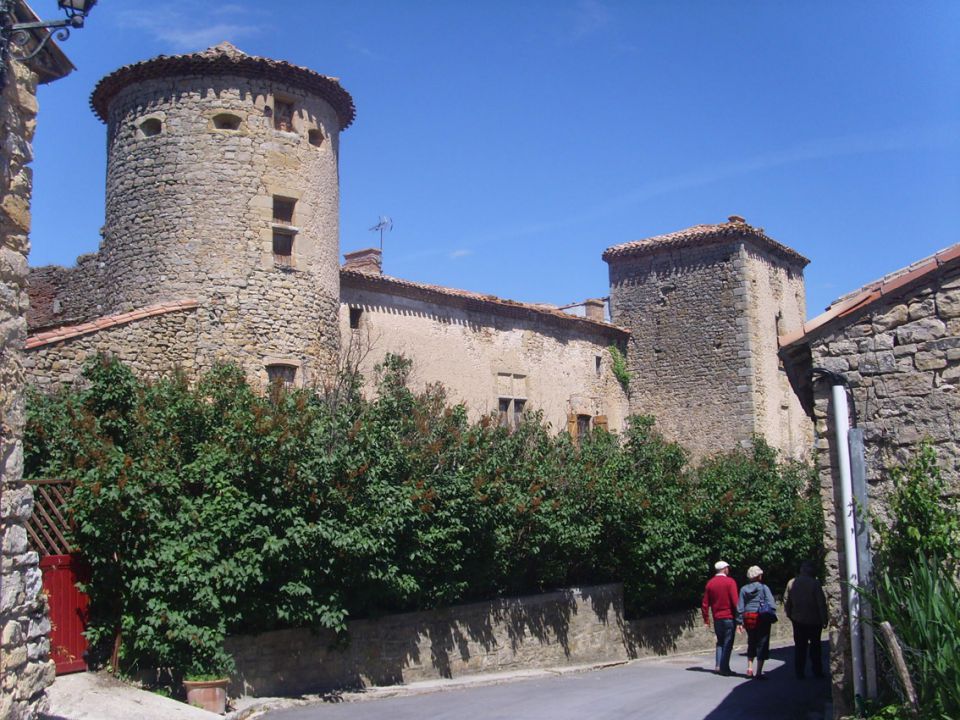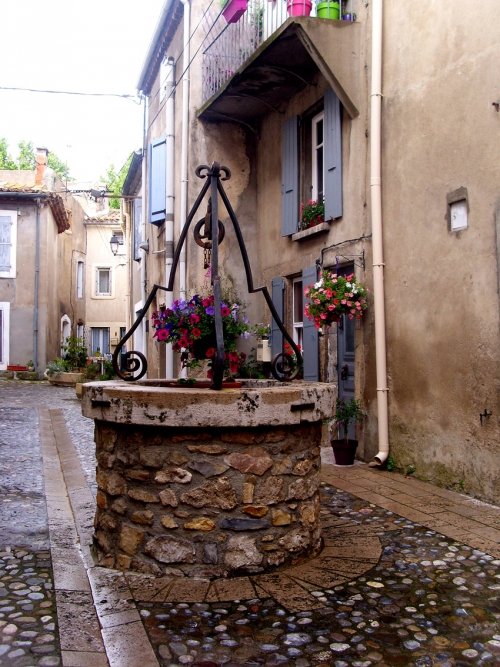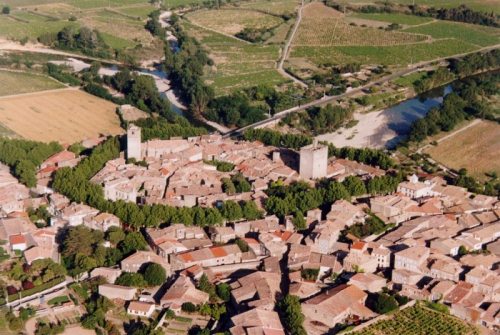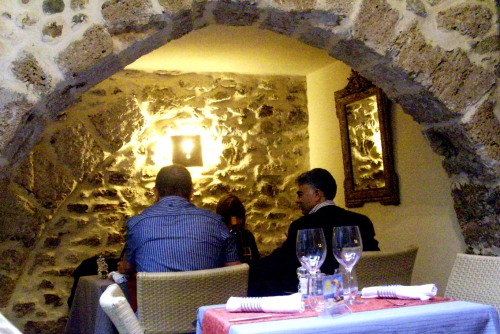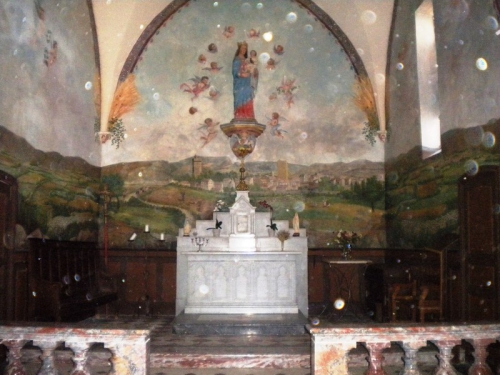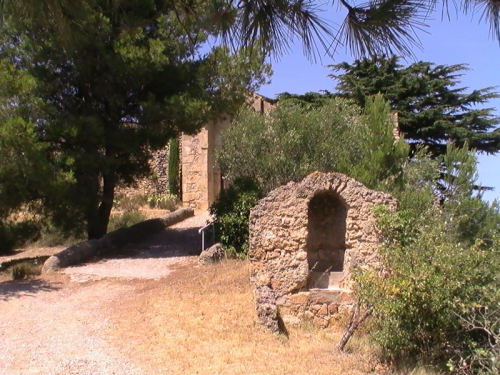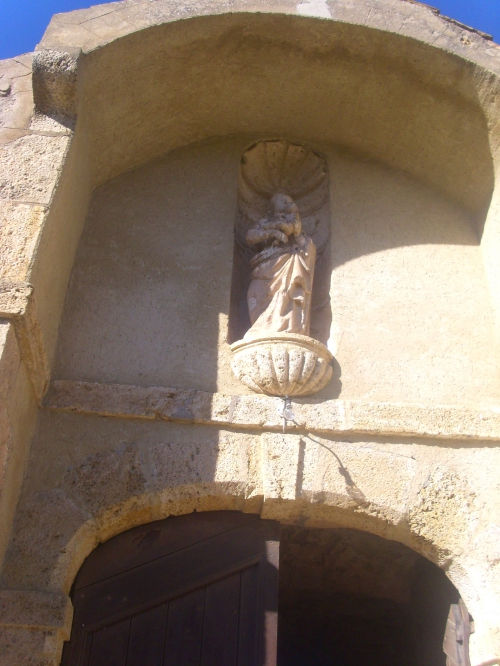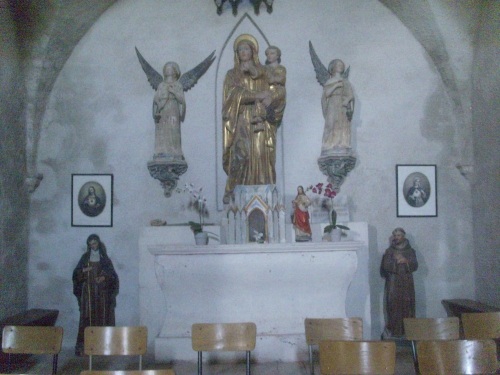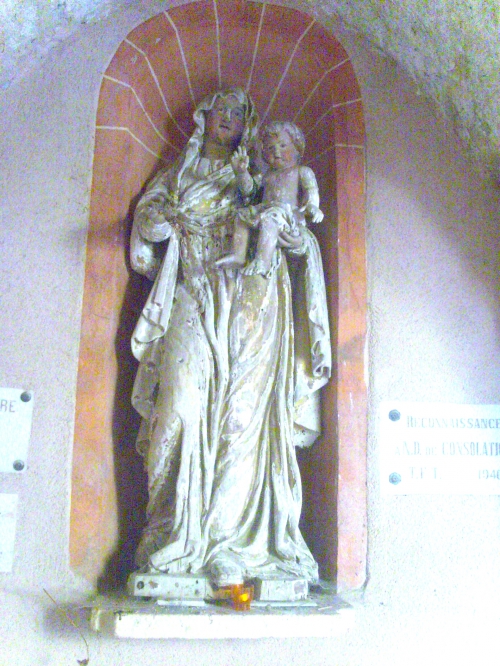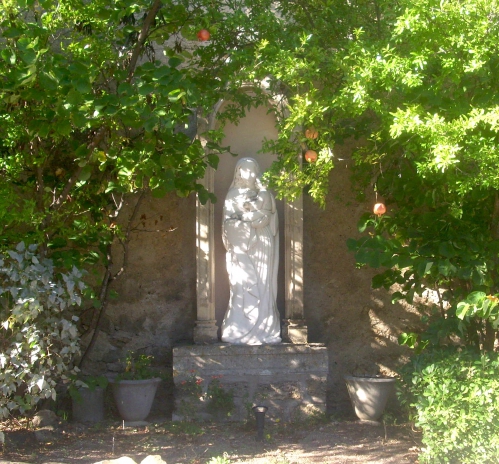Fabrezan
Charm and history at Fabrezan
You can find Fabrezan 10 km south-west of Lézignan on the D611 road, heading towards Narbonne. The medieval town centre overlooks the river Orbieu, which has come all the way from Albières, and just after the bridge is the junction with the River Nielle coming from St. Laurent de Cabrerisse. We know the Orbieu was gold bearing, and we know that river junctions were sacred places to the Celts, so I expected to find an interesting history here.
The medieval ramparts still exist, although parts of them have been made into houses, and can be clearly seen from the bridge. The tower on the left belongs to the church while that on the right must have been a fortress tower; it was recently a shop and is now for sale as a private house.
Fabrezan has a population of 1,300 people, so is large enough to support 2 cafés and a pizzaria which are very local and friendly, but one day friends wanted to take me somewhere special and they choose Les Calicots on the rue du Commerce in the medieval centre, not far from the old well in the first picture.
It was very refined and nice, packed with English-speaking holiday-makers, who were very impressed, especially by the huge wine-glasses. They kept pouring little bits of wine in, and swilling it round the glass, sniffing. My friend Peter however, prefers beer with his meals and we got the impression that people were not impressed by him!
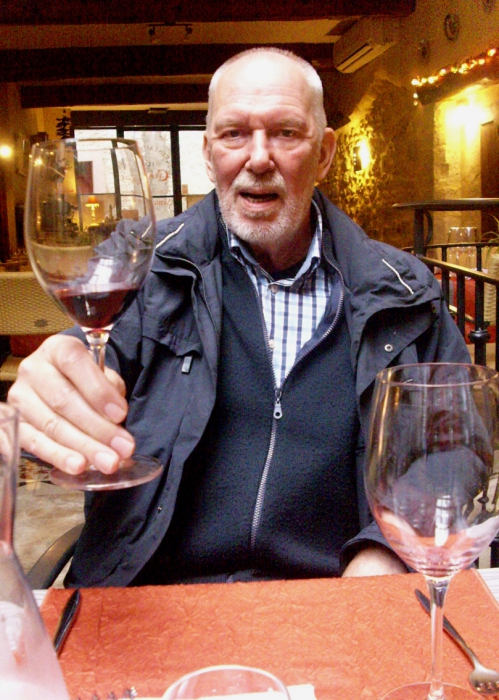
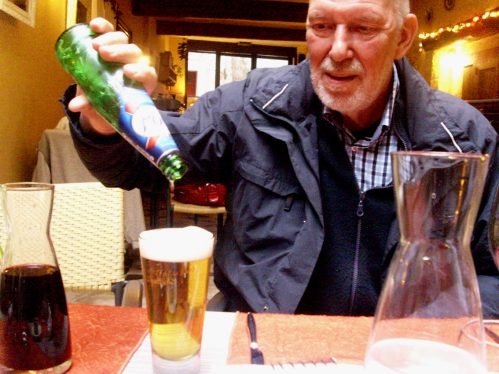
I much prefer eating where the French eat, at the pizzaria or the two café-bars, which are very friendly.
Friends have purchased holiday homes in Fabrezan, so I have visited quite often and noticed a typically low flat-topped mound on the right that I was sure was once a Celtic oppidum. Now THAT was interesting. Olivier, who bought a house opposite in the medieval centre, knocked on my door one day and told me he would take me to it.
Notre Dame de Consolation
You can walk up to it from the town centre - the turn to the right off the Lagrasse road is clearly marked. As we approached, it became more clear by the minute that this was a Celtic oppidum. Once could see all over Fabrezan from it, and the rivers, in a way that you could not from the medieval centre. When the Romans arrived, a Roman colonist called Fabricius founded a settlement on the banks of the Orbieu by its junction with the Nielle.
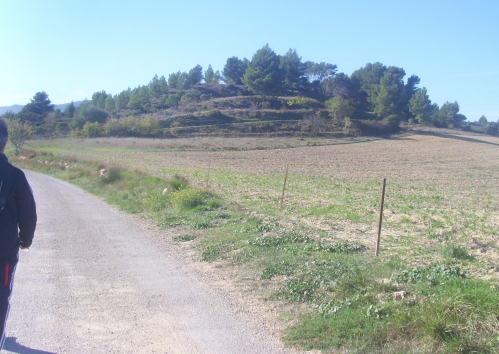
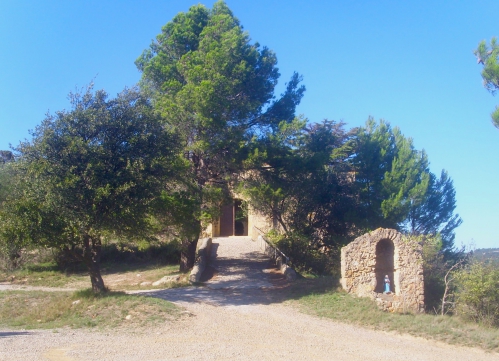
This oppidim has been a sacred site for a long time. A "sanctuary" was once there, called Larzac, which, says the town's official site, is a Celtic word which means plateau or garrigue - the particular scrubland one finds in the south of France. But all the other history is modern.
The whole chapel is delightful to visit, there are also cloisters and gardens. It is dedicated to "our lady" and there are images and statues everywhere, of Mother Mary with Jesus. I sensed everywhere that this was a place where earth and sky met, where the material and the spiritual merged. The "Goddess" was everywhere.
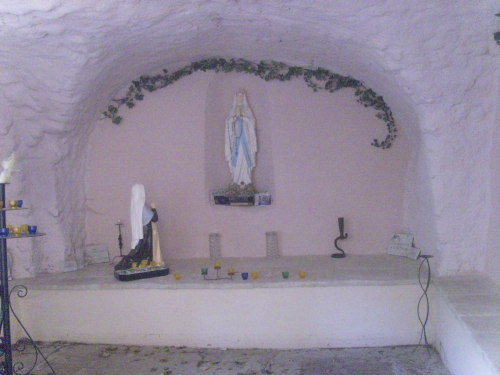
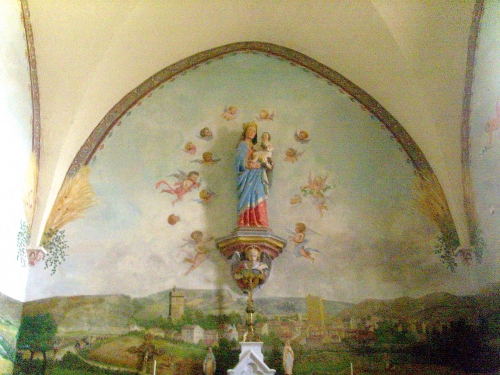
This second picture above is of Notre Dame de Santé, who has a little chapel of her own at Carcassonne, and who also is represented in the cathedral in Carcassonne cité. Intriguing! With its implication of healing! Painted below her is the view of Fabrezan from the oppidum.
Also at Fabrezan;
Within the commune boundaries, some intriguing history.
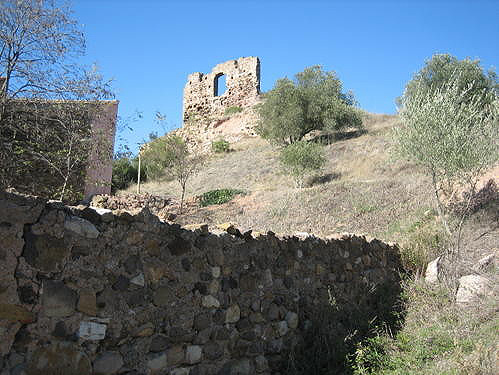
The hamlet of Villerouge-la-Crémade, just to the south of Fabrezan, existed in Roman times for a brick oven was discovered there. The chapel is Visigothic, the Fabrezan official site has confirmed it, and the château was probably destroyed by the Black Prince on his way to Narbonne in 1355. I loved it there, all open under the sky. To read more about Roman Villerouge click here.
Inscrivez-vous au blog
Soyez prévenu par email des prochaines mises à jour
Rejoignez les 95 autres membres
